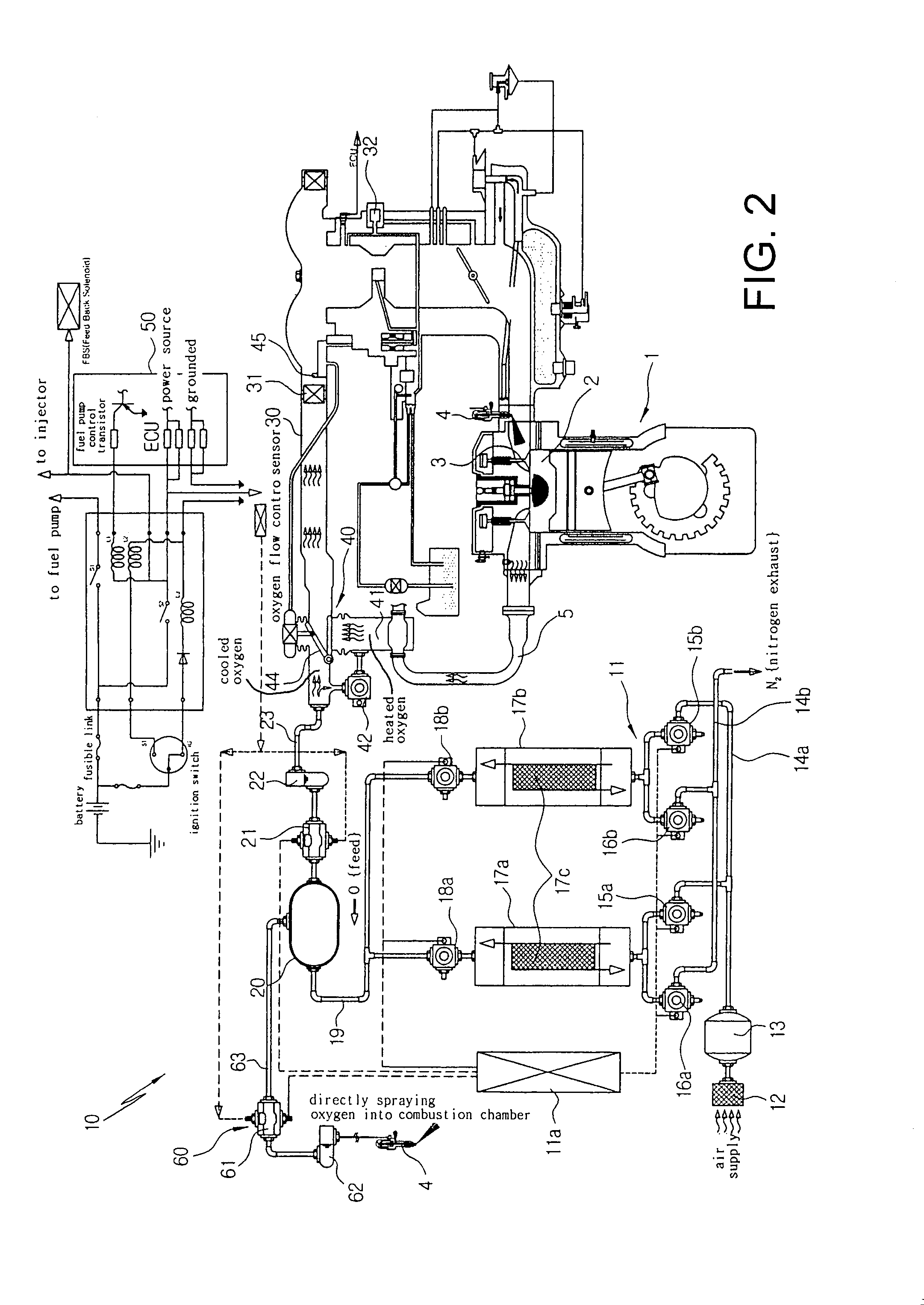Low-fuel consumption and low pollution combustion system for supplying vehicle engine with mixture of fuel and oxygen
a combustion system and low-fuel consumption technology, applied in the direction of liquid fuel feeders, machines/engines, electric control, etc., can solve the problems of environmental pollution, exhaust gas also includes harmful materials, oxides and carbon particles, etc., to maximize combustion efficiency, save fuel, and improve thermal efficiency
- Summary
- Abstract
- Description
- Claims
- Application Information
AI Technical Summary
Benefits of technology
Problems solved by technology
Method used
Image
Examples
first embodiment
[0040]FIG. 1 is a view illustrating a diesel engine equipped with a low-fuel consumption and low-pollution combustion system for supplying a vehicle engine with a mixture of fuel and oxygen according to the present invention.
[0041]The low-fuel consumption and low-pollution combustion system 10 for supplying the vehicle engine with the mixture of fuel and oxygen is applicable for a diesel engine system 1, a gasoline engine 1 and an LPG engine 1. Since the structure and operation of each engine 1 are generally known in the art, they will not be further described below.
[0042]First, as shown in FIG. 1, according to the low-fuel consumption and low-pollution combustion system 10 applied to the diesel engine 1, intake air supplied from the exterior is absorbed in adsorption towers 17a and 17b with predetermined pressure so as to separate oxygen contained in the intake air from nitrogen. At this time, the oxygen separated from the nitrogen is stored in an oxygen storage tank 20 and the nit...
second embodiment
[0077]However, the low-fuel consumption and low-pollution combustion system 10 according to the present invention further includes a direct spray unit 60 for directly spraying the mixture of fuel and oxygen into the combustion chamber 2 of the engine 1.
[0078]The direct spray unit 60 includes an injector 4 installed at an upstream of an intake valve 3 of the engine 1 for simultaneously receiving, mixing and spraying oxygen and fuel, a second pressure regulator 61 connected to the transport pipe 63, which directly connects the oxygen storage tank 20 with the injector 4, in order to directly feed oxygen stored in the oxygen storage tank 20 to the injector 4 while regulating pressure of the oxygen, and a second oil / water separator 62 connected to the transport pipe 63 so as to separate water from the oxygen.
[0079]Accordingly, the second pressure regulator 61 directly feeds the oxygen stored in the oxygen storage tank 20 into the injector 4 through the transport pipe 63 and the injector ...
PUM
 Login to View More
Login to View More Abstract
Description
Claims
Application Information
 Login to View More
Login to View More - R&D
- Intellectual Property
- Life Sciences
- Materials
- Tech Scout
- Unparalleled Data Quality
- Higher Quality Content
- 60% Fewer Hallucinations
Browse by: Latest US Patents, China's latest patents, Technical Efficacy Thesaurus, Application Domain, Technology Topic, Popular Technical Reports.
© 2025 PatSnap. All rights reserved.Legal|Privacy policy|Modern Slavery Act Transparency Statement|Sitemap|About US| Contact US: help@patsnap.com



